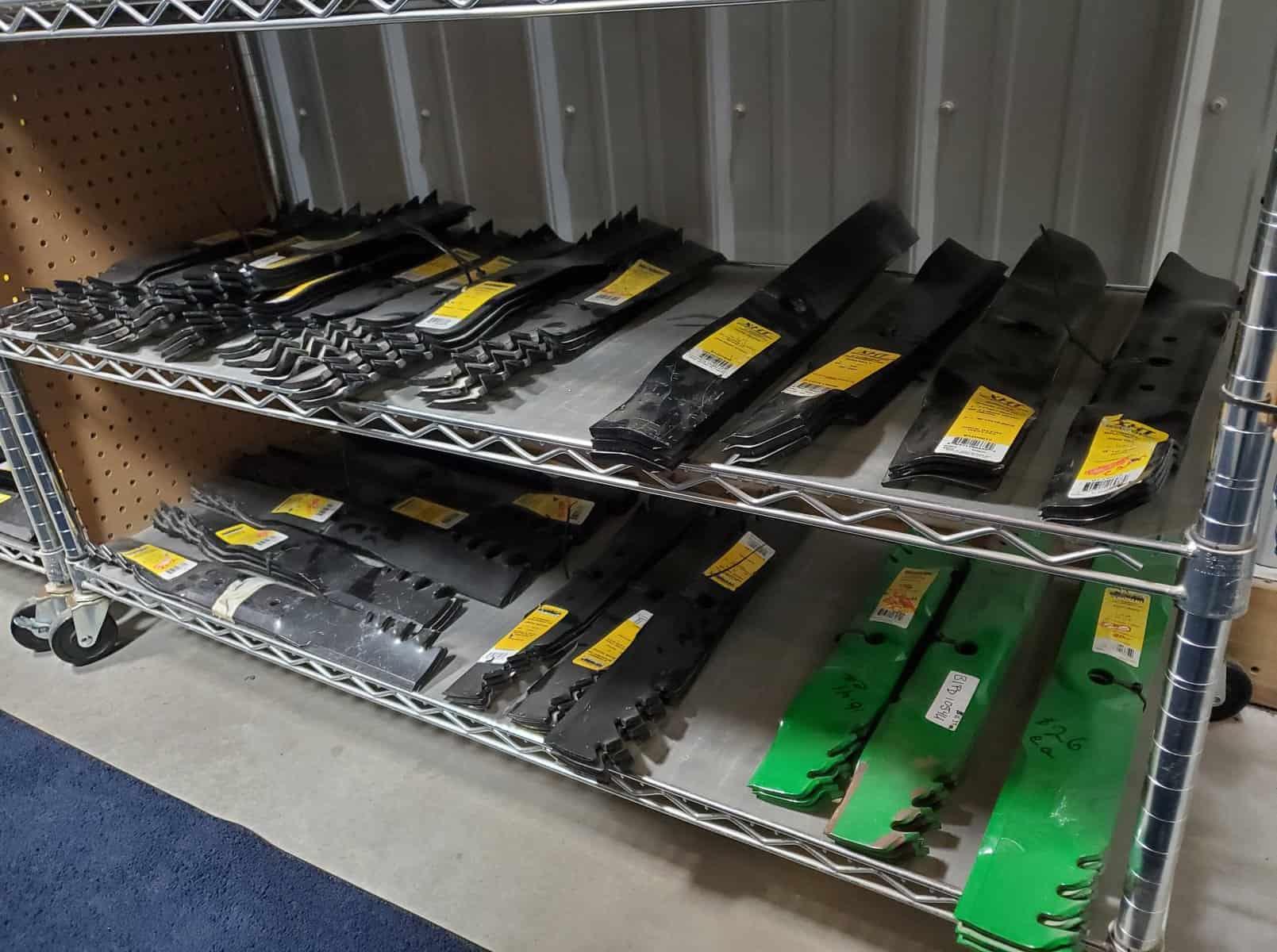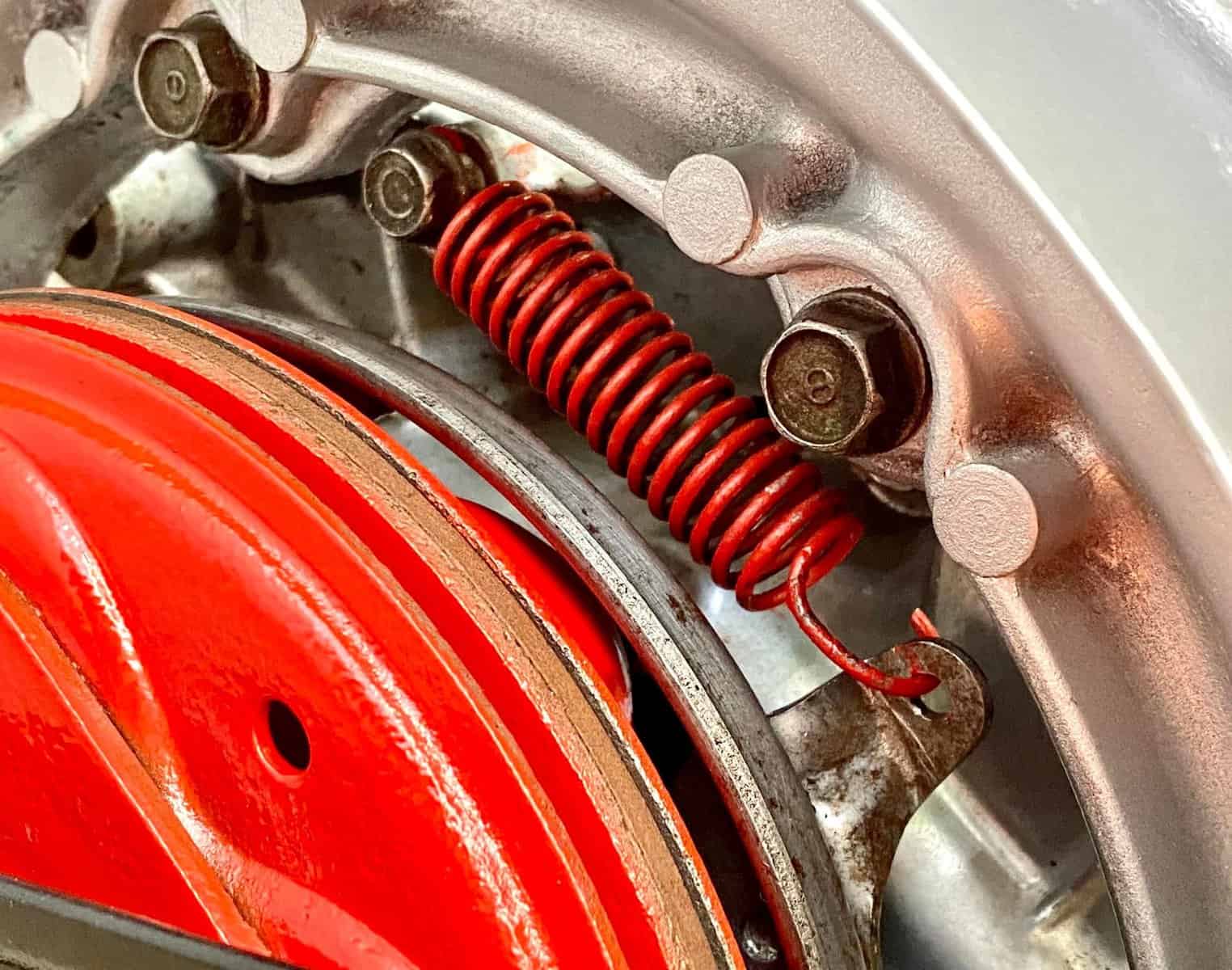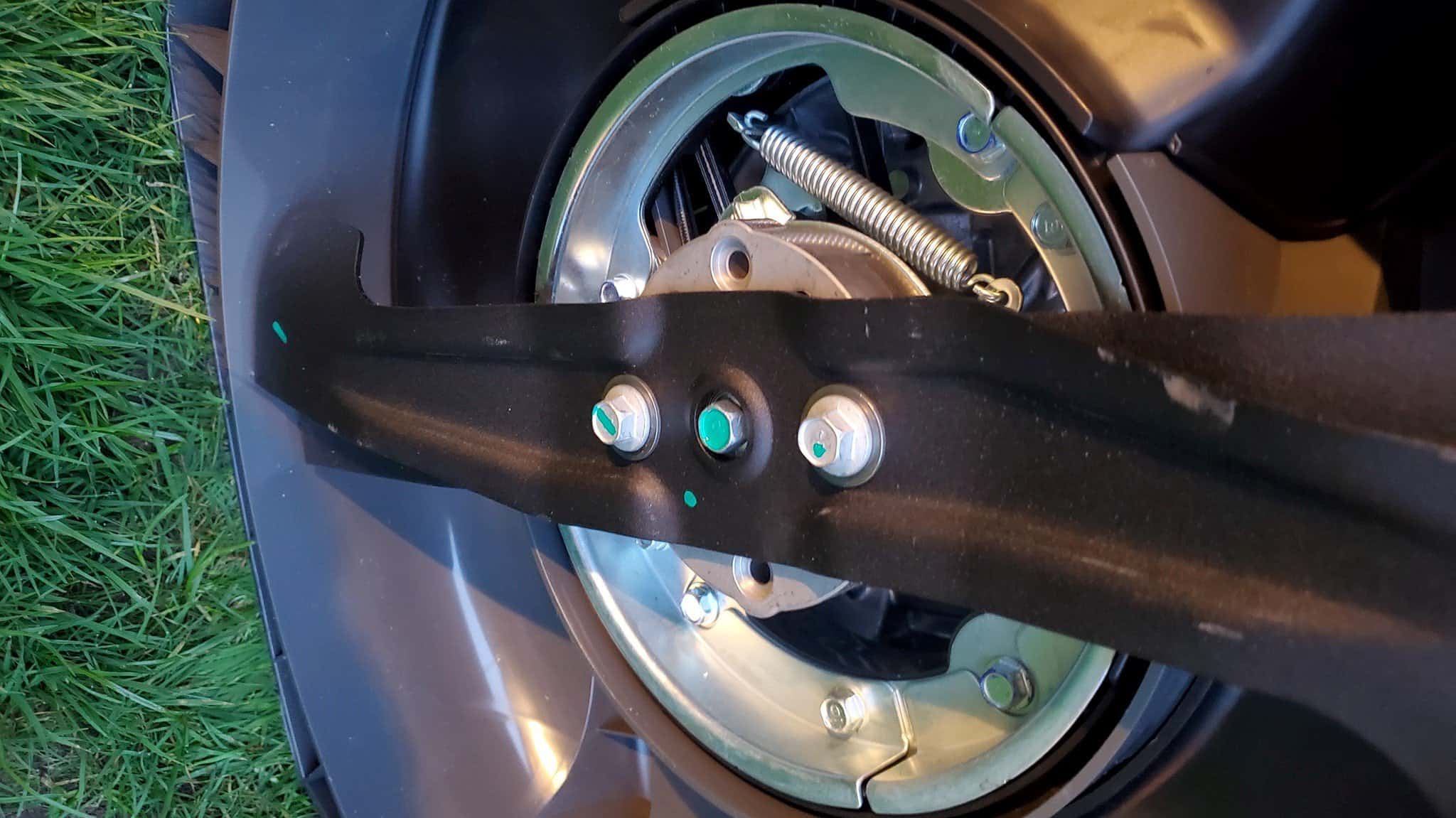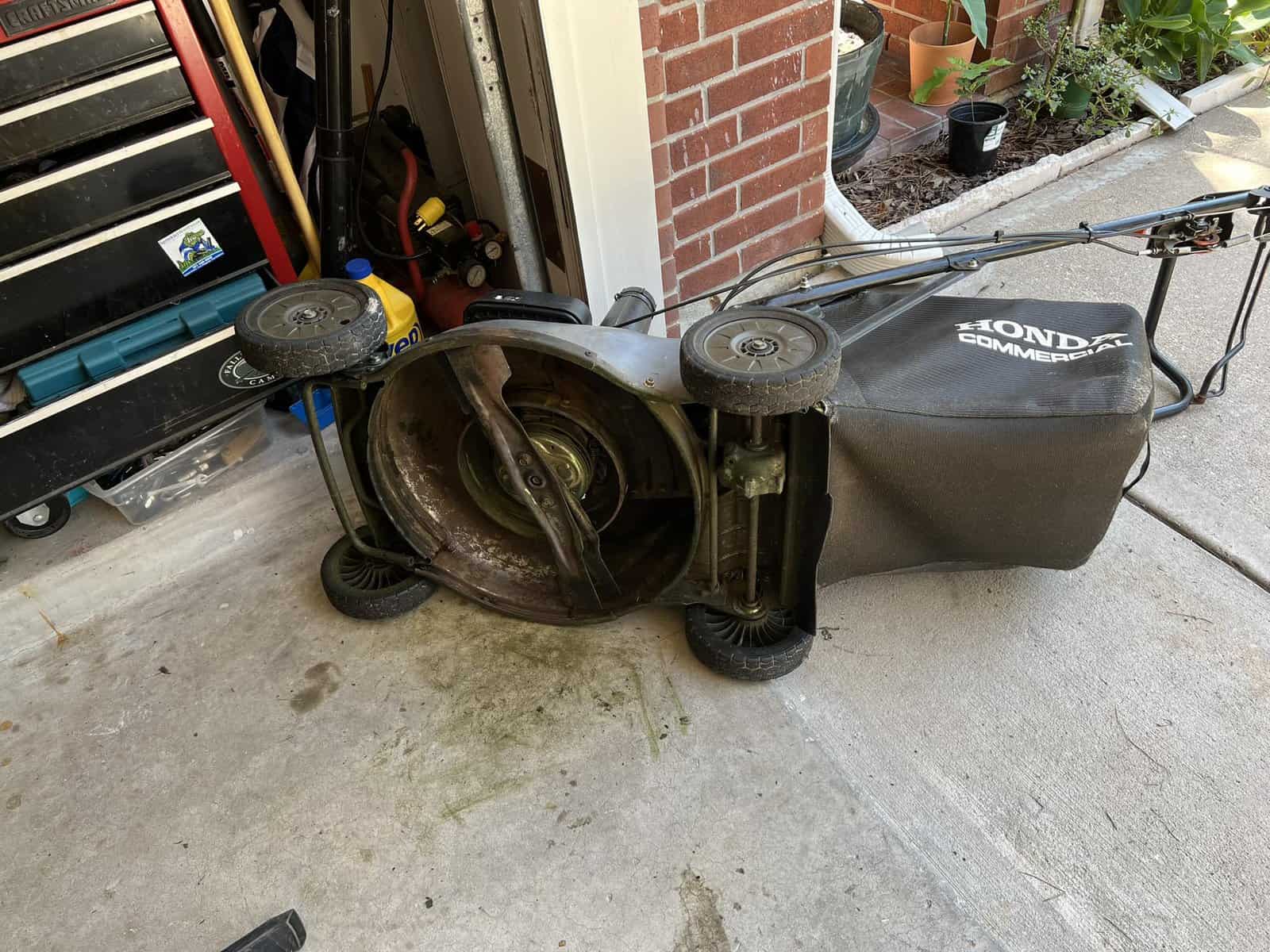Hello,
The care of a lawn is an essential part of home ownership. Lawn mowers are an indispensable tool for achieving this goal.
However, it’s frustrating when the blade spins but does not cut grass. This problem is a common occurrence among lawn mower owners.
We will discuss four causes of lawn mower blade spinning but not cutting and recommend practical tips to repair it.
Let’s scroll down to discover more detail!
Contents
Lawn Mower Blade Spinning But Not Cutting: Causes
If your mower blade spins without cutting, it may be due to the reasons:
The Belt May Loosen/Fall Off
One of the reasons your machine’s blade may spin but not cut is that the belt connecting the engine to the edge may loosen or fall off.
The belt is responsible for transferring power from the engine to the blade.
There is no power transfer if the belt is loose or falls off. Consequently, the blade won’t spin fast enough to cut the grass.

Pulleys Malfunctions
Another cause of your new mower blades not cutting well is a malfunctioning pulley system. The pulleys maintain the belt’s tension and speed, which powers the blade.
If the pulleys are worn out or misaligned, it can cause the belt to become loose. Consequently, the blade spins but doesn’t cut.
Incorrectly Installed Blades
You must install the mower blades correctly; otherwise, they won’t cut the grass.
If you install the blades upside down or incorrectly positioned, they won’t create the necessary air current to lift and cut the grass. You may also notice the lawn mower blade hitting sides.
Ensure the blades are sharp, balanced, and installed correctly per the manufacturer’s instructions.

A Bad/Loose Spring
The spring that controls the blade’s movement can also cause spinning without cutting. The blade won’t have enough power to cut the grass if the spring is loose or broken.
Lawn Mower Blade Spinning But Not Cutting: Solutions
If your mower blade spins but does not cut, there are several solutions available, as shown below:
Replace The Belt
To ensure the longevity of your machine and prevent any potential accidents, regularly check and replace the belt when necessary.
Replacing the belt may seem daunting at first. However, it’s a relatively straightforward process with the guides below.
Locate the belt on your equipment using the manufacturer’s manual or online tutorials.
Once you’ve located it, carefully remove the old belt and note its installation. Thus, you can easily install the new one.
Next, take the old belt to a hardware store to find a replacement. Choose a belt that’s the correct size and type for your model.
If you need more help, ask an expert. With the new belt in hand, you’re ready to install it.
Follow the manufacturer’s instructions carefully, threading the belt through all the necessary pulleys and attachments.
Double-check that the new belt you’ve correctly installed before starting your equipment. Watch this video for a detailed tutorial:
Replace The Spring
Identify the type of spring your machine uses. Next, purchase a new one. When you get the new spring, let’s remove the old spring from your equipment.
Follow the manufacturer’s instructions provided with your machine. After removing the old spring, install the new one.
Again, follow the manufacturer’s instructions to install the new spring correctly.
Once finishing the installation, test your equipment again. Start it and ensure the blade cuts correctly. If it is, then you have successfully fixed the problem!
If not, another issue may exist. Thus, consult a professional or refer to the mower’s manual for further troubleshooting.

Fix The Pulley
First, closely inspect the pulley for any signs of wear or damage. You may notice that it looks worn or corroded.
Also, you may hear unusual sounds when the blade is spinning. If you detect any issues with the pulley, replace it immediately.
When purchasing a new pulley, ensure it is compatible with your machine model. Besides, it must meet any requirements laid out by the manufacturer.
Once getting the correct pulley, start the installation by carefully following the manufacturer’s instructions.
After installing the new pulley, test the equipment and ensure the blade is cutting correctly.
It may involve mowing a small patch of grass to ensure the blade is cutting cleanly and evenly.

Adjust The Tension
Refer to your owner’s manual for instructions on adjusting the tension on your specific model.
You must follow these instructions carefully. Improper adjustment can cause further damage to your device.
Once the tension is adjusted, start your machine and test it. Another issue may be present if the blade still cuts incorrectly.
Check the blade for signs of damage or wear, and consider sharpening or replacing it if necessary.
Furthermore, ensure that the grass is not too thick or overgrown. It can also make your blade spin without cutting.
FAQS
What Causes The Blades To Spin?
The blades spin due to the engine, blade brake clutch, and blade hitting mower deck. Without these components, the machine could not cut the grass properly.

What Happens If The Lawn Mower Blade Is Not Balanced?
When a mower blade is not balanced, it can cause considerable vibration. The vibration causes damage to the engine, deck, and other parts of your equipment.
Moreover, it can also cause uneven cuts on the grass, making the lawn look untidy and unattractive.
An imbalanced blade can also decrease fuel efficiency, increasing fuel costs.
When Should You Change Mower Blades?
The frequency at which you should change your mower blades depends on how often you mow your grass.
Changing your blades at least once a year is advisable. However, if you mow your lawn more frequently, you should change the blades more often.
For example, changing the blades 2 – 3 times per year is better if you mow your lawn every week.
The Bottom Line
A mower blade spinning without cutting can be a frustrating experience, but it is a common issue, and you can fix it.
By identifying the cause of the problem and following the proper fix, you can get your machine back to cutting grass effectively.
Always follow the manufacturer’s instructions when fixing your equipment to increase its longevity.


